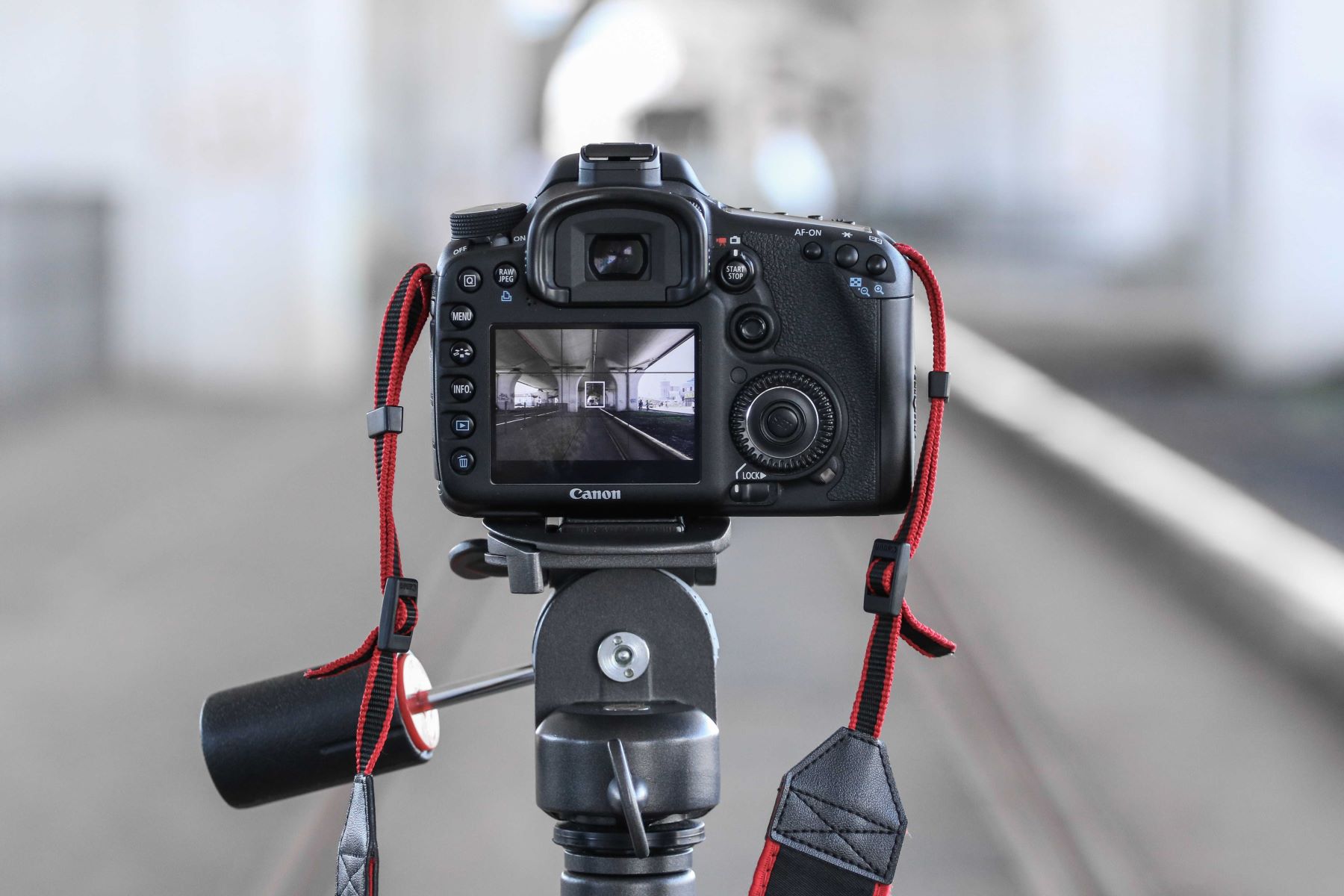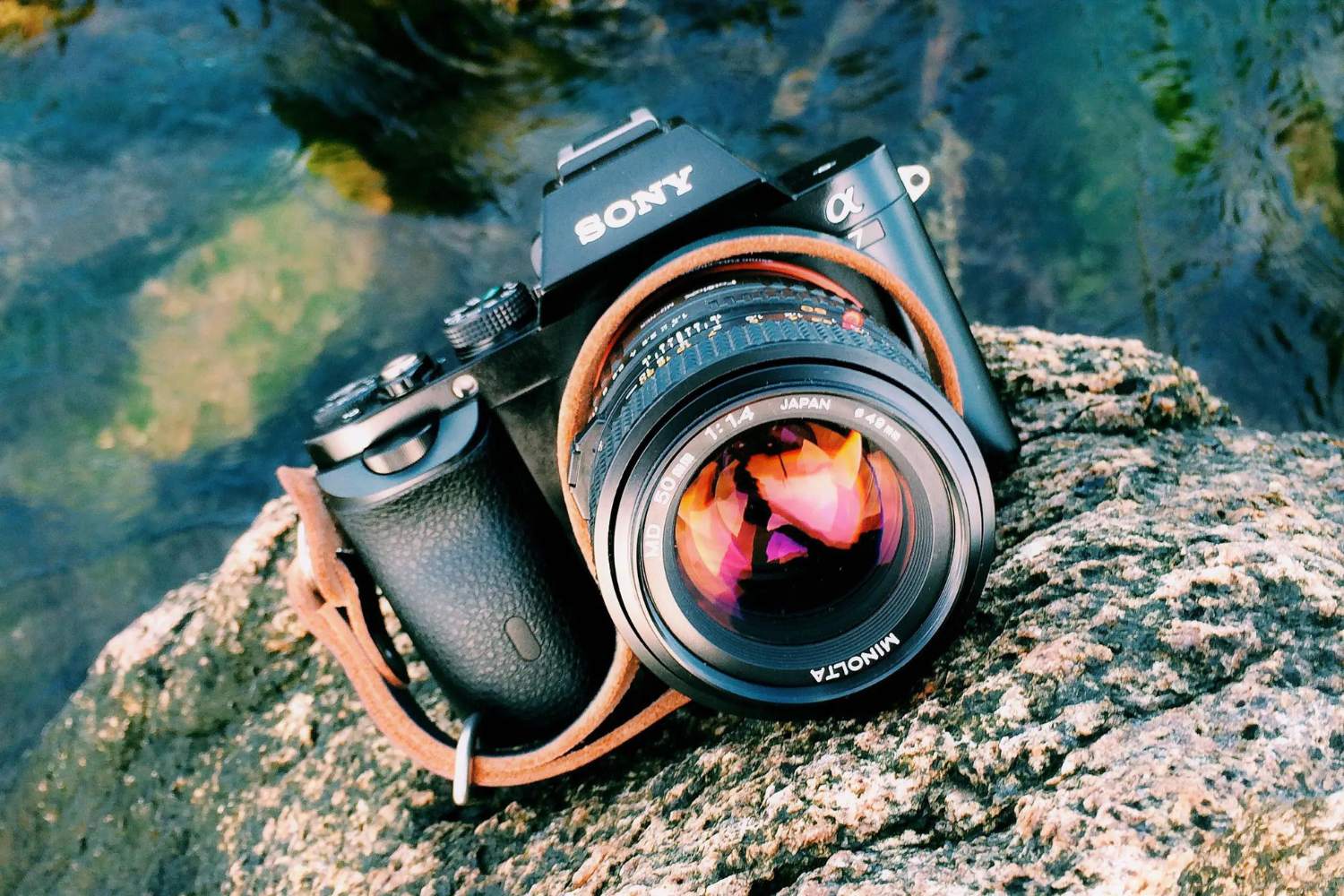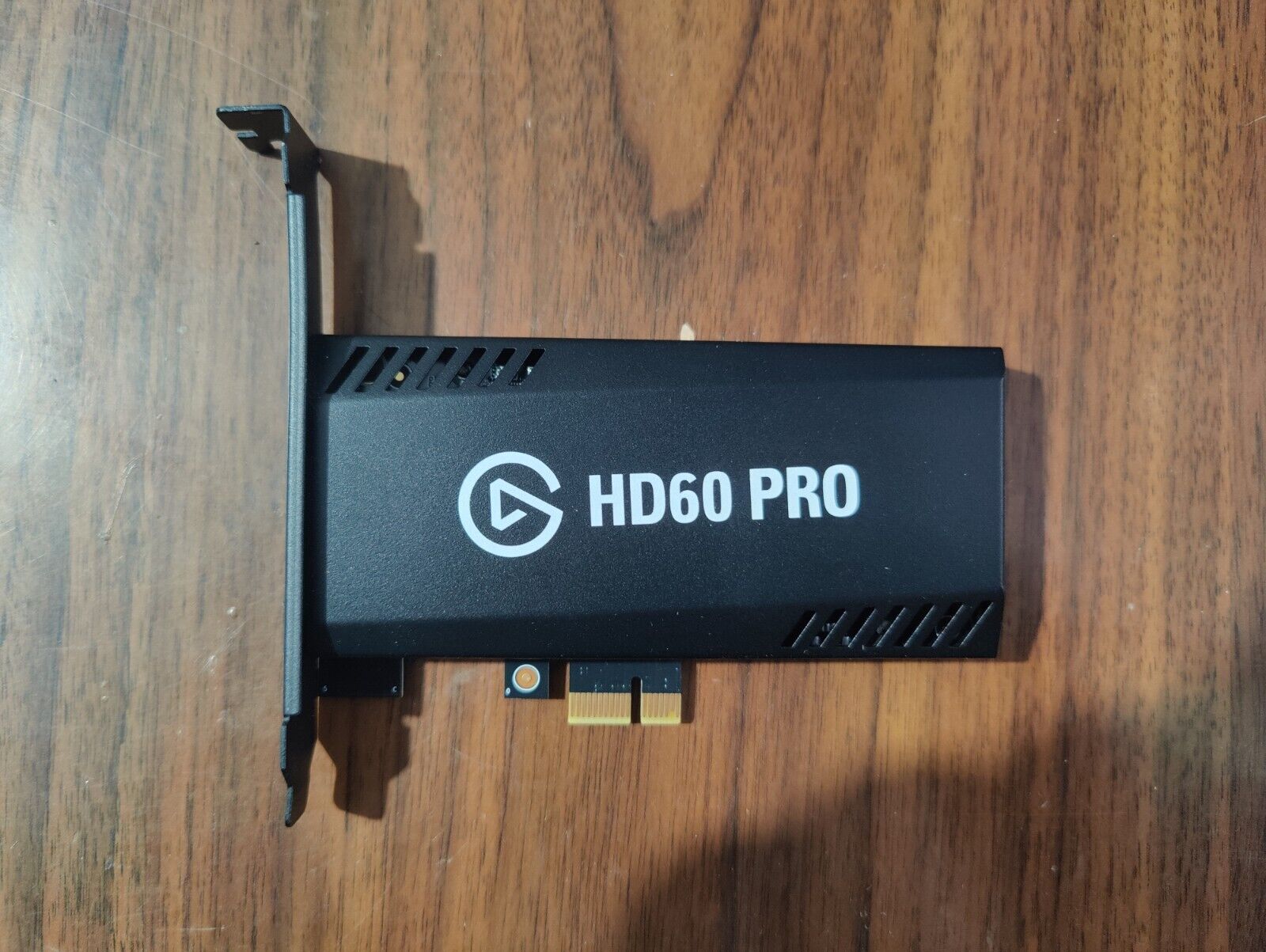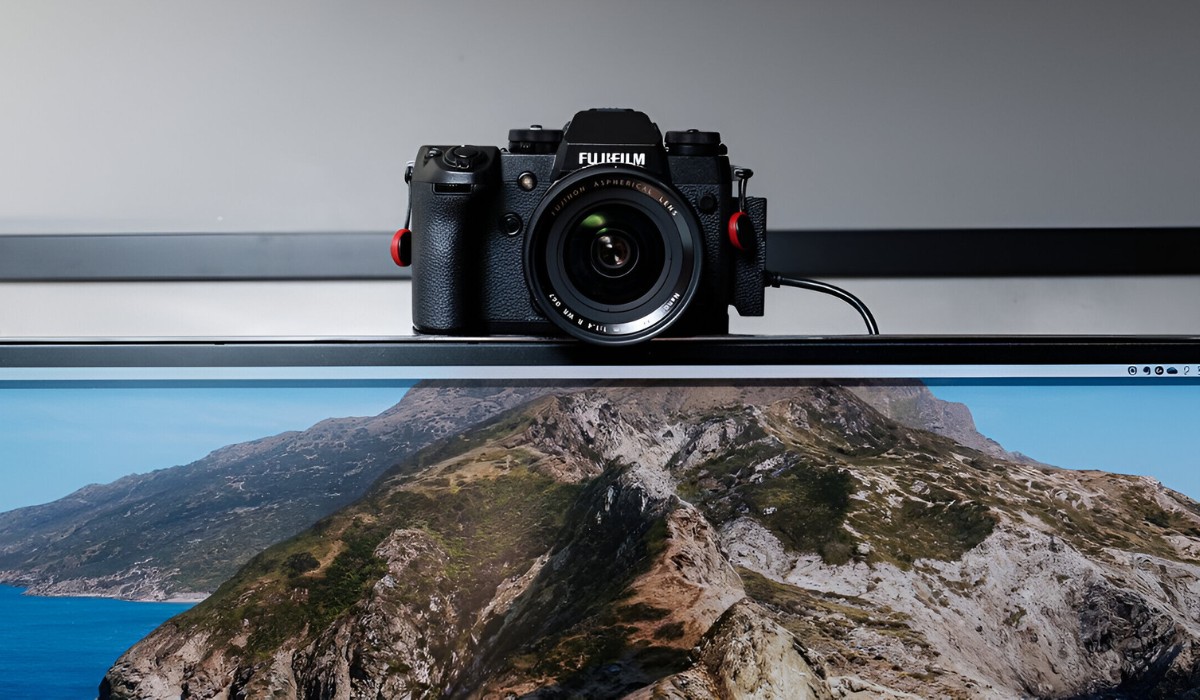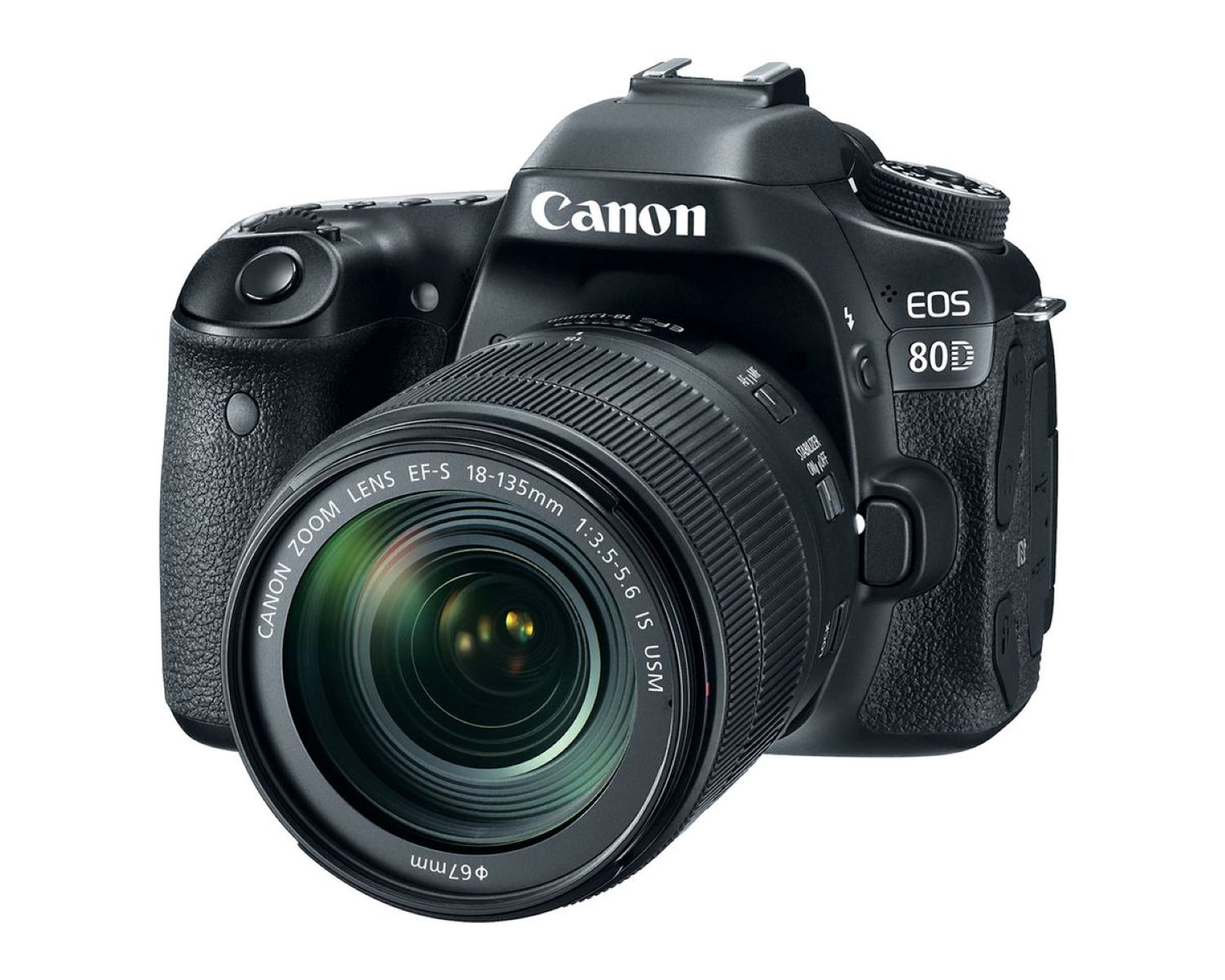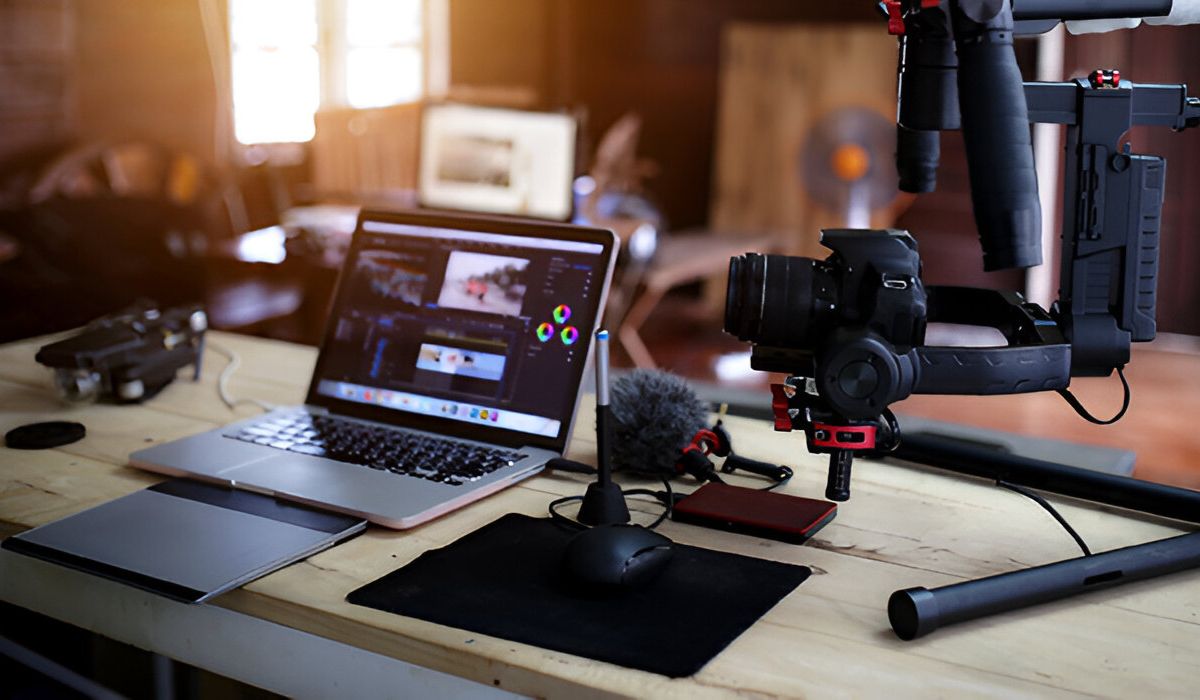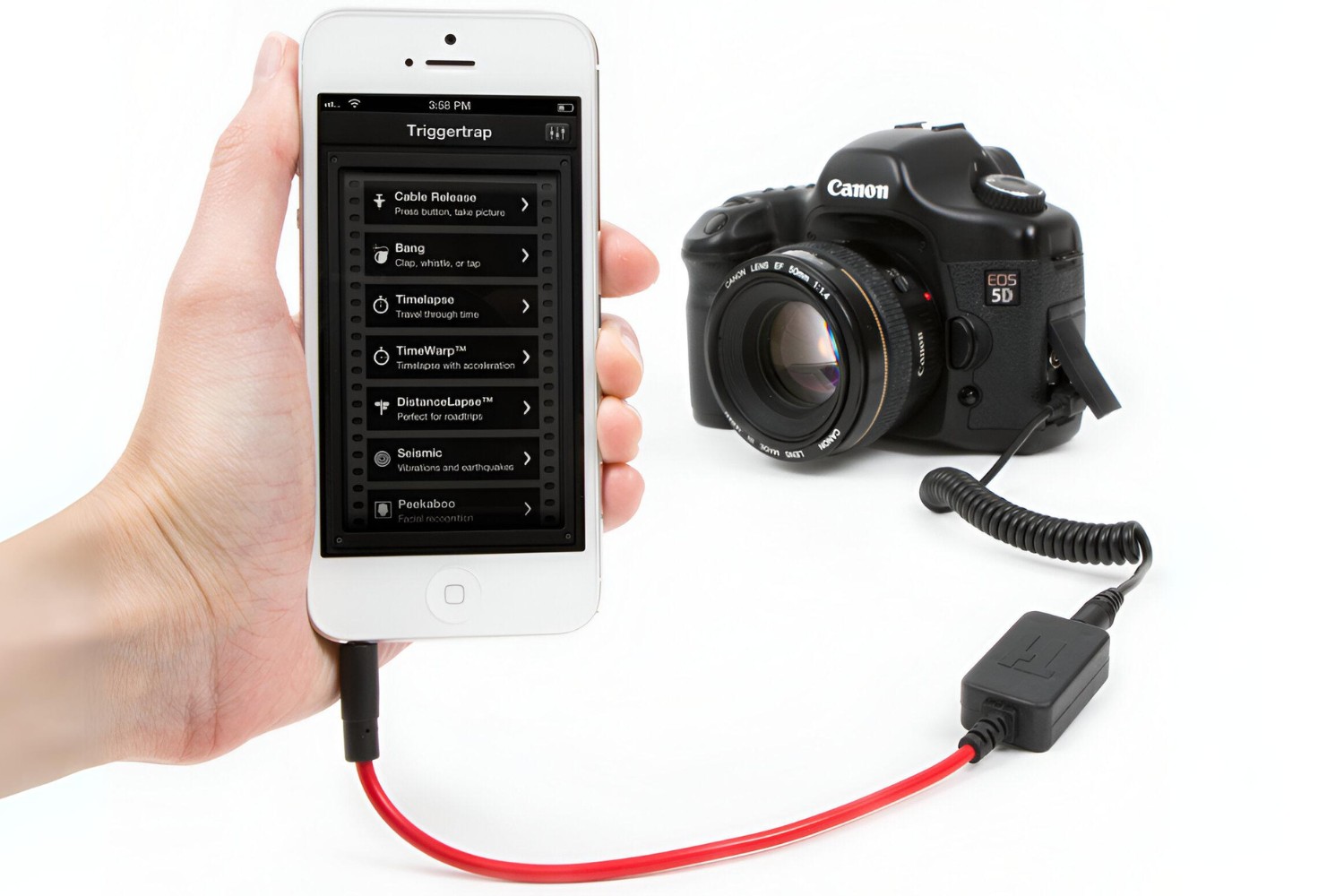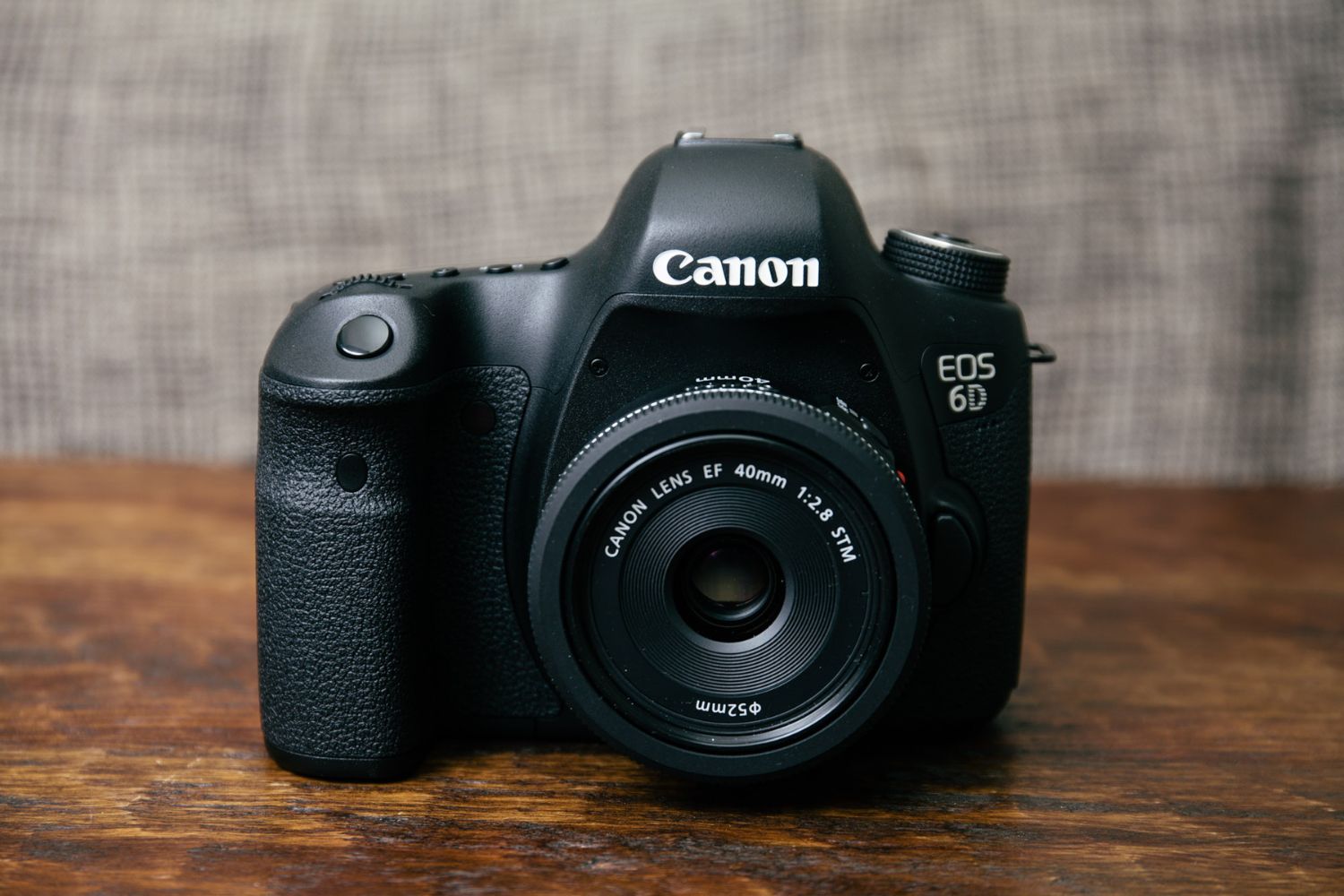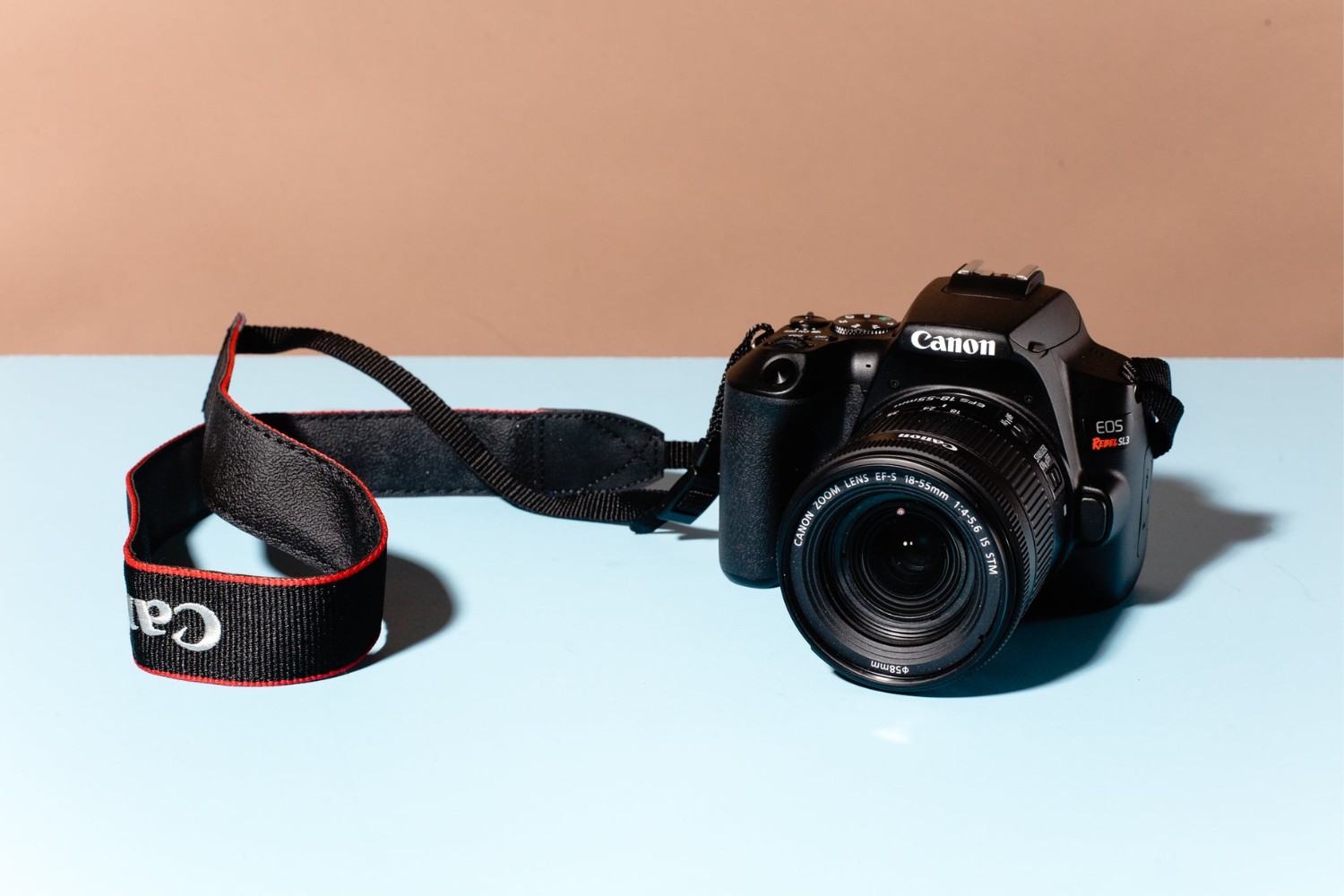Introduction
Welcome to the exciting world of DSLR photography! Whether you're a novice photographer or a seasoned enthusiast, mastering the art of using a DSLR camera can significantly elevate the quality of your photographs. Understanding the intricacies of a DSLR camera and how to leverage its features effectively can open up a realm of creative possibilities, allowing you to capture stunning images in various settings.
In this comprehensive guide, we will delve into the fundamental aspects of using a DSLR camera, providing you with valuable insights and practical tips to enhance your photography skills. From understanding the basic components of a DSLR camera to mastering advanced shooting techniques, this guide aims to equip you with the knowledge and confidence to maximize the potential of your DSLR.
Photography enthusiasts are often drawn to DSLR cameras for their versatility, exceptional image quality, and the ability to customize settings to suit diverse shooting conditions. While the array of buttons, dials, and settings on a DSLR camera may initially appear daunting, with the right guidance, you can navigate through these features with ease and precision.
By the end of this guide, you will have gained a solid foundation in using a DSLR camera, empowering you to unleash your creativity and capture captivating moments with confidence. So, grab your DSLR camera, and let's embark on this enriching journey into the captivating world of photography!
Understanding the Basics of a DSLR Camera
Before delving into the technical aspects of using a DSLR camera, it’s essential to familiarize yourself with its basic components and functionalities. A DSLR (Digital Single-Lens Reflex) camera comprises several key elements that collectively contribute to its exceptional imaging capabilities.
1. Lens and Sensor: The lens is a crucial part of a DSLR camera, responsible for focusing light onto the camera’s sensor. Understanding the different types of lenses and their respective focal lengths is essential for achieving diverse photographic effects, from wide-angle landscapes to telephoto portraits. The sensor, often referred to as the camera’s “digital film,” captures the incoming light to produce the final image.
2. Viewfinder and Mirror: One of the distinguishing features of a DSLR camera is its optical viewfinder, which allows you to compose your shots by looking through the lens via a system of mirrors and prisms. This direct optical view provides a clear and real-time preview of the scene, enabling precise framing and composition.
3. Controls and Settings: DSLR cameras offer a wide range of manual controls, including aperture, shutter speed, and ISO settings, granting photographers the flexibility to adjust these parameters based on the desired creative output. Familiarizing yourself with these controls is pivotal for achieving the desired exposure and visual effects in your photographs.
4. Image Processor and Display: The image processor within a DSLR camera plays a crucial role in handling and optimizing the data captured by the sensor, contributing to the overall image quality. Additionally, the rear LCD display provides a convenient interface for reviewing images, adjusting settings, and navigating through the camera’s menu system.
By grasping the fundamental components and functionalities of a DSLR camera, you lay the groundwork for harnessing its full potential. In the subsequent sections, we will delve deeper into the intricacies of utilizing these components to capture compelling and visually striking photographs.
Familiarizing Yourself with the Camera Settings
Mastering the various settings of your DSLR camera is essential for achieving optimal results in your photography endeavors. By familiarizing yourself with the camera’s settings, you gain the ability to adapt to different shooting scenarios and exercise creative control over your images.
1. Mode Dial: The mode dial on a DSLR camera offers a selection of shooting modes, including Manual (M), Aperture Priority (A/Av), Shutter Priority (S/Tv), Program (P), and various scene modes. Understanding the distinctions between these modes empowers you to tailor the camera’s behavior to suit specific shooting conditions and creative preferences.
2. White Balance: White balance settings allow you to adjust the color temperature of your images, ensuring accurate reproduction of colors under different lighting conditions. By selecting the appropriate white balance setting, you can mitigate color casts and preserve the natural tones of your subjects.
3. Autofocus Modes: DSLR cameras offer a range of autofocus modes, such as Single-Servo AF, Continuous-Servo AF, and Automatic AF. Each mode is designed to accommodate varying subject movement and focusing requirements, granting you the flexibility to capture sharp and well-focused images in diverse scenarios.
4. Metering Modes: Understanding the metering modes of your camera, such as Evaluative, Center-Weighted, and Spot metering, is crucial for accurately determining the exposure levels within a scene. This knowledge enables you to make informed decisions when setting the exposure parameters for your photographs.
5. Custom Functions: Many DSLR cameras feature custom functions that allow you to personalize the camera’s behavior to align with your shooting preferences. These functions encompass a wide array of settings, including button customization, autofocus behavior, and exposure control, offering a tailored shooting experience.
By acquainting yourself with the diverse settings and customization options available on your DSLR camera, you gain the confidence to adapt swiftly to changing shooting conditions and exercise precise control over the visual characteristics of your photographs. In the subsequent sections, we will explore advanced techniques for leveraging these settings to harness the full potential of your DSLR camera.
Mastering the Exposure Triangle
Understanding the concept of the exposure triangle is pivotal for achieving well-exposed and visually compelling photographs with your DSLR camera. The exposure triangle comprises three fundamental elements – aperture, shutter speed, and ISO – that collectively dictate the exposure and visual characteristics of an image.
1. Aperture: The aperture, denoted by the f-number (e.g., f/2.8, f/5.6), regulates the size of the lens opening, controlling the amount of light that enters the camera. A wider aperture (smaller f-number) results in a shallow depth of field, ideal for isolating subjects from the background, while a narrower aperture (larger f-number) yields a greater depth of field, suitable for capturing expansive landscapes and intricate details.
2. Shutter Speed: Shutter speed dictates the duration for which the camera’s shutter remains open, determining the amount of light that reaches the camera’s sensor. Faster shutter speeds are effective for freezing motion in action-oriented scenes, while slower shutter speeds can introduce motion blur, imparting a sense of dynamism to moving subjects or scenes.
3. ISO: The ISO setting governs the camera’s sensitivity to light, with lower ISO values (e.g., ISO 100) offering optimal image quality in well-lit conditions, and higher ISO values (e.g., ISO 1600) enabling effective low-light photography at the expense of potential image noise. Balancing the ISO setting with the aperture and shutter speed is crucial for achieving the desired exposure without compromising image quality.
Mastering the interplay between these three elements empowers you to manipulate the exposure and visual characteristics of your photographs with precision. By strategically adjusting the aperture, shutter speed, and ISO to suit the specific requirements of each scene, you can imbue your images with the desired mood, clarity, and visual impact.
As we delve deeper into the intricacies of using a DSLR camera, we will explore advanced techniques for harnessing the exposure triangle to capture evocative and visually arresting photographs in a myriad of shooting conditions.
Using Different Shooting Modes
Modern DSLR cameras offer a diverse array of shooting modes, each tailored to specific shooting scenarios and creative preferences. Understanding and adeptly utilizing these modes can significantly enhance the versatility and creative potential of your photography. Let’s explore the various shooting modes and their respective applications:
- Manual (M) Mode: In Manual mode, you have complete control over the exposure settings, including aperture, shutter speed, and ISO. This mode is ideal for situations where precise control over the exposure parameters is paramount, such as studio photography or capturing challenging lighting conditions.
- Aperture Priority (A/Av) Mode: Aperture Priority mode allows you to set the desired aperture while the camera automatically adjusts the shutter speed to achieve the optimal exposure. This mode is well-suited for controlling the depth of field and is commonly used in portrait, macro, and landscape photography.
- Shutter Priority (S/Tv) Mode: Shutter Priority mode enables you to select the desired shutter speed, with the camera adjusting the aperture to attain the correct exposure. This mode is valuable for capturing moving subjects, as it grants you control over motion blur and the portrayal of dynamic scenes.
- Program (P) Mode: Program mode offers a balance between manual control and automatic settings, providing flexibility for adjusting exposure compensation, ISO, and other parameters while allowing the camera to set the initial aperture and shutter speed. It is a versatile mode suitable for various shooting conditions.
- Scene Modes: Many DSLR cameras feature scene modes tailored to specific scenarios, such as portrait, landscape, sports, and night photography. These modes optimize the camera settings to deliver optimal results in the designated shooting environments, making them ideal for photographers seeking convenience and ease of use.
By leveraging the diverse shooting modes available on your DSLR camera, you can adapt swiftly to changing shooting conditions and exercise precise control over the visual characteristics of your photographs. Whether you prioritize creative autonomy or seek the convenience of automated settings, the array of shooting modes empowers you to capture compelling and visually striking images across a spectrum of photographic genres.
As we progress through this guide, we will further explore the nuances of each shooting mode and provide practical insights to help you harness their potential in realizing your creative vision through photography.
Understanding and Using Different Lenses
Lenses are integral components of a DSLR camera, playing a pivotal role in shaping the visual characteristics and creative potential of your photographs. Understanding the diverse types of lenses and their respective applications equips you with the versatility to capture a wide array of subjects and scenes with finesse. Let’s explore the primary categories of lenses and their unique attributes:
- Wide-Angle Lenses: These lenses have a short focal length, enabling them to capture expansive scenes with a broad field of view. They are ideal for landscape photography, architectural shots, and situations where emphasizing perspective and spatial relationships is paramount.
- Standard Lenses: Standard lenses, often with a focal length around 50mm, closely mimic the human eye’s perspective, making them versatile for everyday photography. They are suitable for portraits, street photography, and general-purpose shooting, offering a natural and balanced representation of scenes.
- Telephoto Lenses: Telephoto lenses feature longer focal lengths, allowing for magnified and tightly framed compositions of distant subjects. They are indispensable for wildlife photography, sports events, and capturing subjects where physical proximity is limited, enabling you to isolate and emphasize specific elements within a scene.
- Macro Lenses: Designed for close-up photography, macro lenses enable the capture of intricate details and small subjects with exceptional clarity and magnification. They are favored for capturing flora, fauna, and intricate textures, offering a profound exploration of the minute and often overlooked aspects of the world.
- Prime and Zoom Lenses: Prime lenses have a fixed focal length, offering exceptional optical quality and wider apertures, making them well-suited for low-light conditions and achieving artistic depth of field effects. On the other hand, zoom lenses provide variable focal lengths, offering flexibility for framing compositions without changing lenses, making them convenient for a wide range of shooting scenarios.
By discerning the distinct characteristics and applications of different lenses, you can tailor your photographic approach to suit the subject matter and visual narrative you wish to convey. Whether seeking expansive vistas, intimate details, or dynamic perspectives, the diverse array of lenses empowers you to articulate your creative vision with precision and impact.
As we delve further into the realm of DSLR photography, we will delve into advanced techniques for leveraging various lenses to capture evocative and visually compelling images across diverse genres and shooting conditions.
Tips for Composing Great Shots
Effective composition is a cornerstone of captivating photography, transcending technical proficiency to imbue your images with visual harmony, storytelling prowess, and emotive resonance. By integrating fundamental compositional principles and creative insights, you can elevate the impact and narrative depth of your photographs. Here are essential tips for composing great shots:
- Rule of Thirds: Embrace the rule of thirds by envisioning your frame divided into a 3×3 grid and positioning key elements along the gridlines or at their intersections. This technique fosters visual balance and dynamism, guiding the viewer’s gaze across the image with compelling fluidity.
- Leading Lines: Utilize leading lines – such as roads, fences, or architectural features – to guide the viewer’s eyes toward the main subject or focal point, imparting a sense of depth and visual engagement within the composition.
- Foreground Interest: Incorporate elements in the foreground to add depth and context to your compositions, creating a sense of immersion and dimensionality that draws the viewer into the scene.
- Negative Space: Embrace negative space by strategically incorporating empty or minimalistic areas within the frame, allowing the main subject to breathe and command attention amidst the visual simplicity.
- Use of Light and Shadow: Leverage the interplay of light and shadow to sculpt the visual narrative, emphasizing texture, form, and mood within your photographs. Pay attention to the direction and quality of light to evoke emotive and evocative atmospheres.
- Experiment with Perspectives: Explore diverse vantage points and perspectives, whether through low-angle, high-angle, or unconventional viewpoints, to infuse your compositions with fresh dynamism and narrative intrigue.
- Emotional Impact: Seek to convey emotion and narrative resonance within your compositions, capturing fleeting moments and authentic expressions that resonate with the viewer on a profound and emotive level.
By integrating these compositional tips into your photographic practice, you can infuse your images with visual intrigue, narrative depth, and emotional resonance. Embrace experimentation, keen observation, and a discerning eye to craft compositions that transcend the ordinary, inviting viewers into a world of evocative storytelling and visual allure.
As we navigate through the art of DSLR photography, we will delve deeper into the application of these compositional principles across diverse genres and photographic scenarios, empowering you to craft images that resonate with enduring impact and visual eloquence.
Mastering Manual Focus and Autofocus
The ability to effectively manage focus is paramount in achieving sharp, well-defined photographs that accurately convey the intended visual narrative. Whether leveraging manual focus for precise control or harnessing the convenience of autofocus for swift and accurate subject acquisition, mastering these focusing techniques is pivotal for elevating the quality of your images. Let’s explore the nuances of manual focus and autofocus:
Manual Focus: Engaging manual focus empowers you with precise control over the focal plane, allowing you to meticulously refine the focus to align with your creative vision. This method is particularly advantageous in situations where the autofocus system may struggle, such as low-contrast scenes, macro photography, or capturing subjects through obstructive elements. By attentively adjusting the focus ring and leveraging the camera’s focus aids, such as focus peaking or magnification, you can achieve pinpoint sharpness and meticulous attention to detail within your compositions.
Autofocus: Modern DSLR cameras feature advanced autofocus systems equipped with a myriad of focus points, subject tracking capabilities, and intelligent algorithms that facilitate swift and accurate subject acquisition. Leveraging autofocus allows for seamless and efficient focusing in dynamic and fast-paced shooting scenarios, such as sports, wildlife, or spontaneous street photography. Understanding the various autofocus modes – including single-point, zone, and continuous tracking – enables you to adapt the autofocus system to suit the specific demands of each photographic scenario, ensuring precise and reliable focus acquisition.
By adeptly mastering both manual focus and autofocus, you equip yourself with the versatility to seamlessly transition between these focusing methods based on the unique requirements of each photographic situation. Whether meticulously refining the focus for still-life compositions or swiftly tracking moving subjects with precision, the harmonious integration of manual focus and autofocus empowers you to capture images with unparalleled clarity and visual impact.
As we delve deeper into the realm of DSLR photography, we will explore practical techniques for leveraging manual focus and autofocus to achieve compelling and visually arresting images across a spectrum of genres and shooting conditions, fostering a seamless synergy between technical precision and creative expression.
Using Additional Accessories to Enhance Your Photography
Beyond the inherent capabilities of your DSLR camera and lenses, a myriad of accessories exists to augment and refine your photographic endeavors, providing enhanced creative control, expanded versatility, and elevated technical precision. By judiciously integrating these accessories into your toolkit, you can elevate the quality and expressive potential of your images. Let’s explore essential accessories to enhance your photography:
Tripods: A sturdy tripod forms the bedrock of stable and meticulously composed photographs, particularly in low-light conditions, long exposures, or situations requiring precise framing. By mitigating camera shake and facilitating deliberate composition, tripods are indispensable for achieving sharpness and visual clarity in your images.
Filters: Filters, such as polarizers, neutral density, and graduated neutral density filters, offer nuanced control over light, contrast, and color rendition, enabling you to manipulate and enhance the visual characteristics of your photographs directly at the point of capture. These accessories are invaluable for landscape, architectural, and nature photography, allowing for creative expression and technical refinement in diverse shooting conditions.
External Flashes and Lighting Modifiers: External flashes and lighting modifiers, such as diffusers and reflectors, expand your capacity to sculpt and manipulate light, fostering evocative atmospheres and dynamic illumination in your images. These accessories are pivotal for portrait photography, indoor shooting, and creative lighting experimentation, enabling you to infuse your images with visual depth and emotive resonance.
Remote Shutter Releases: Remote shutter releases provide a seamless means of triggering the camera’s shutter without physical contact, minimizing the risk of camera shake in long exposures, astrophotography, or situations where maintaining a hands-free approach is advantageous. These accessories ensure precise and vibration-free image capture, particularly in scenarios requiring meticulous technical control.
Bags and Carrying Solutions: Thoughtfully designed camera bags, backpacks, and carrying solutions offer secure and organized transport for your camera gear, ensuring protection, accessibility, and ergonomic comfort during travel and on-location shooting. These accessories safeguard your equipment while facilitating efficient access to your gear, promoting seamless workflow and peace of mind during photographic expeditions.
By incorporating these accessories into your photographic repertoire, you fortify your capacity to realize your creative vision with precision, technical finesse, and expressive depth. Each accessory serves as a strategic ally in expanding your creative horizons and refining the technical integrity of your images, fostering a seamless convergence of artistic intent and technical excellence.
As we navigate through the realm of DSLR photography, we will delve into practical insights for leveraging these accessories to enrich your photographic practice, empowering you to capture images of enduring impact and visual eloquence across diverse genres and shooting conditions.
Conclusion
Congratulations on embarking on this enriching journey into the captivating world of DSLR photography! Throughout this comprehensive guide, we have delved into the fundamental aspects of using a DSLR camera, equipping you with valuable insights and practical tips to enhance your photography skills. From understanding the basic components of a DSLR camera to mastering advanced shooting techniques, this guide has aimed to provide you with the knowledge and confidence to maximize the potential of your DSLR.
By familiarizing yourself with the intricate workings of a DSLR camera and its diverse features, you have laid a solid foundation for harnessing its full potential. Understanding the exposure triangle, leveraging different shooting modes, and mastering the nuances of manual focus and autofocus are pivotal steps toward capturing compelling and visually striking photographs in diverse scenarios.
Furthermore, by embracing the principles of effective composition, exploring the nuances of different lenses, and judiciously integrating essential accessories into your photographic toolkit, you have honed the creative and technical acumen necessary to articulate your unique vision with precision and impact.
As you continue to explore the art of DSLR photography, I encourage you to embrace experimentation, keen observation, and a discerning eye, allowing your creativity to flourish and your technical proficiency to evolve. Whether capturing sweeping landscapes, intimate portraits, or dynamic street scenes, the art of photography is a boundless journey of self-expression and visual storytelling.
Remember, each photograph is a testament to your unique perspective and creative sensibilities. Embrace the challenges, relish the moments of inspiration, and continue to refine your craft with passion and dedication. Your DSLR camera is a powerful tool, and with the knowledge and insights gained from this guide, you are poised to embark on a captivating photographic odyssey, capturing moments of enduring beauty and significance.
So, as you pick up your DSLR camera and venture forth into the world, may your photographic pursuits be filled with discovery, creativity, and the profound joy of capturing life’s indelible moments through the lens of your unique vision.







